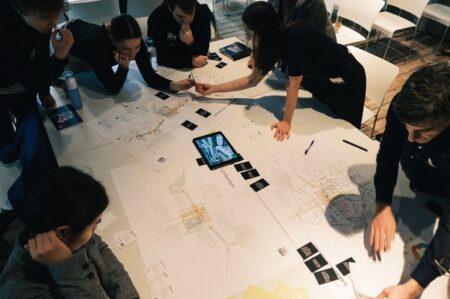Walk-In Co-creation
Feb 2022 - ongoing
Walk-In (acronym of Widening sustAinable mobiLity networKs: Impact on Nodes) focuses on the relation between architectural design practice and mobility, as being the driver for change towards the sustainable development of our cities. The project has taken the small suburban stations in Rotterdam South area as a testbed for the exploration.
Walk-In is 1-year long research project financed by NWO. It is part of the KIEM GoCi program which aims at linking Academic research with Professional knowledge.
The group of Complex Projects, at the Department of Architecture, teamed up with several Dutch public and private partners and the creative industry. Those are: the City of Rotterdam, Deltametropolis Association, De Zwarte Hond, PosadMaxwan, Mecanoo, Bureau Spoorbouwmeester, the Ministry of Infrastructure and Water Management, the rail infrastructure manager ProRail. It sees also the collaboration of the University of Gustave Eiffel and AREP. The consortium partners form a new network of researchers and professionals in the creative industry, experts of design of stations and public space. The network also expanded throughout the project activities.

The design approach plays an important role for the Creative Industry involved in the urban transformation of our living environment. In the Walk-In project, the Creative Industry is represented by Dutch designers and researchers experts in the field of architecture and urban design. Walk-In is using the design process as a method of collaboration with policy makers and designers involved in the development of station areas. Looking at the different spatial scales (the building, the district and the city), in terms of programming, architecture, public spaces, and the integration with several modes of transports, Walk-In aims to understand the difficult relationship between the ambitions, long-term master planning, and the urban development processes, within short-term conditions, of small suburban stations.
More information on this project can be accessed here and here.